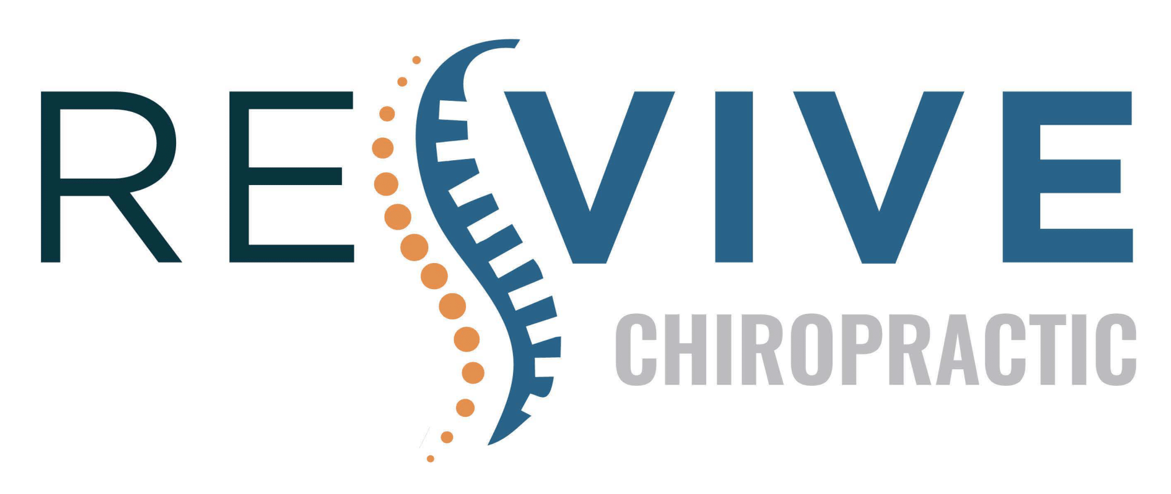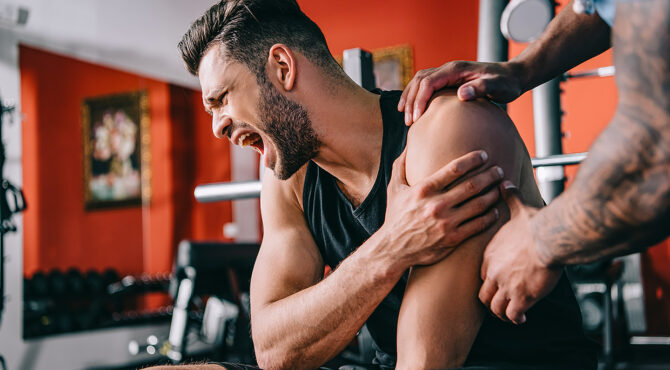As a local chiropractor, I understand how crucial it is for you to find effective relief from a neck injury for your daily comfort and mobility. Many of you may already be aware that techniques such as stretching and heat therapy can provide some relief, but there are additional methods we can explore together that can enhance your recovery process.
In our practice, we emphasize the importance of strengthening exercises and alternative therapies, each offering unique benefits that contribute to your healing journey. It's vital to recognize how these techniques work in harmony—not just to alleviate pain, but to prevent future issues from arising.
By integrating chiropractic care with these methods, we can address the root causes of your discomfort and promote long-term health. Let's delve into these various techniques to find the ones that align best with your needs and help you achieve optimal wellness. Your journey to recovery can be supported through natural healing, and I'm here to guide you every step of the way.
Stretching Exercises
As a local chiropractor, I often see patients who are struggling with neck injuries and discomfort. One of the most effective ways to address these issues is through stretching exercises. You may not be aware, but gentle stretches can significantly alleviate pain and enhance mobility in your neck.
I recommend starting with a simple yet effective exercise: the side neck stretch. To perform this, gently tilt your head to one side, bringing your ear closer to your shoulder. Hold this position for about 15-30 seconds before switching to the other side. This stretch targets the muscles along the sides of your neck, helping to reduce tension and discomfort.
Another beneficial stretch is the chin tuck. Sit up straight and gently draw your chin back towards your throat while keeping your spine aligned. You'll notice a stretch in the back of your neck. Hold this position for 5 seconds and repeat it 10 times. This exercise not only strengthens your neck muscles but also promotes better posture, which can further alleviate pain.
Don't overlook the neck rotation stretch. Whether seated or standing, slowly turn your head to one side until you feel a gentle stretch. Hold this position for 15-30 seconds, then switch sides. This movement enhances flexibility and helps reduce stiffness in the neck.
Lastly, incorporating shoulder rolls into your routine is essential. Simply roll your shoulders forward and backward in a circular motion. This exercise helps relieve tension not only in your neck but also in your upper back, contributing to overall relaxation and comfort.
Heat Therapy
As a local chiropractor dedicated to your well-being, I want to share how heat therapy can be a transformative approach for alleviating neck pain.
Applying heat can significantly enhance blood circulation and help relax tight muscles, which is essential for recovery. It's an important tool in our natural healing toolkit.
Let's discuss the most effective methods to apply heat and the ideal temperatures to ensure you gain the maximum benefits.
Whether you're dealing with stress, tension, or stiffness, understanding how to use heat therapy properly can make a real difference in your healing journey.
Benefits of Heat Therapy
As a local chiropractor, I want to share with you one of the most effective methods for alleviating neck pain: heat therapy. This natural approach offers immediate comfort by boosting blood circulation to the affected area, which in turn promotes healing.
When you apply heat, it helps your muscles relax, easing stiffness and tension. You'll likely find that your neck moves more freely, making your daily activities easier to handle.
Moreover, heat therapy plays a significant role in calming the pain signals that your body sends to the brain. By dulling these signals, you can achieve greater relief and a more relaxed state of mind.
What's more, this treatment is non-invasive and drug-free, so you can avoid the potential side effects that often accompany medications.
Incorporating heat therapy into your routine can also enhance your overall sense of well-being. The warmth creates a soothing environment that can help reduce stress and anxiety—particularly beneficial when you're dealing with neck discomfort.
As you make heat therapy a part of your wellness journey, you may notice improvements in your neck's flexibility and mobility, allowing you to participate in activities you love without the burden of pain.
Application Methods Explained
As a chiropractor, I often recommend heat therapy as a natural and effective way to alleviate neck pain. There are several methods you can use to apply heat that can cater to your personal preferences and lifestyle.
One popular method is using a heating pad. It's quite simple: just plug it in, set your desired temperature, and place it on your neck for about 15 to 20 minutes. To protect your skin, be sure to cover the pad with a towel.
If you enjoy a more immersive approach, taking a warm shower or bath can be incredibly beneficial. The combination of steam and warmth helps relax tight muscles and improves circulation, promoting healing.
For those of you constantly on the move, I recommend using a microwaveable heat pack or a warm towel. Just heat it up and apply it to the affected area for quick relief.
Another effective option is a hot water bottle. Fill it with hot water, wrap it in a cloth for safety, and place it on your neck to enjoy consistent warmth.
Herbal wraps can also enhance your experience, providing not only heat but also soothing scents that can further promote relaxation.
Remember, the key is to listen to your body. If the heat feels too intense or uncomfortable, make sure to adjust the temperature or duration accordingly.
I encourage you to experiment with these different techniques to discover what works best for you in managing and alleviating your neck pain. Your comfort and well-being are our top priorities in the journey toward natural healing.
Ideal Temperature Guidelines
As a local chiropractor, I want to share some essential information about using heat therapy to relieve neck pain.
It's important to find the right temperature to ensure you maximize the benefits while minimizing any discomfort. Ideally, you should aim for a warm heat application, not scorching hot—around 104°F to 113°F (40°C to 45°C) is generally comfortable for most individuals. If you find the heat too intense, allow it to cool slightly before applying it to your neck.
There are several effective heat sources you can use, such as heating pads, warm towels, or hot water bottles. No matter which method you choose, it's crucial to have a barrier, like a cloth, between the heat source and your skin to prevent burns.
I recommend starting with short sessions of about 15 to 20 minutes and closely monitoring your body's response. If you notice increased pain or discomfort, it's wise to reduce either the duration or the temperature of your heat application.
Also, be sure to give your neck a break between applications. This rest period helps prevent overheating and allows your body to adjust.
Heat therapy can be a powerful tool in relieving tension and enhancing blood flow, so I encourage you to incorporate it into your wellness routine. Just remember these temperature guidelines to ensure you have a safe and soothing experience.
If you have any questions or concerns, don't hesitate to reach out for further guidance on how to best support your healing journey.
Cold Therapy
As a local chiropractor, I want to share with you the benefits of cold therapy for alleviating neck injuries and reducing inflammation. Cold therapy is an effective and natural method that can significantly help you manage pain and promote healing.
When you apply cold to your neck, it constricts blood vessels, which minimizes swelling and numbs discomfort. This technique is especially beneficial during the first 48 hours after an injury, as it can markedly decrease pain and speed up the recovery process.
To get started with cold therapy, you'll need a few simple materials. You can use a cold pack, ice wrapped in a towel, or even a bag of frozen vegetables. Just be cautious not to place ice directly on your skin, as this can lead to frostbite.
Once your cold source is ready, apply it to your neck for about 15 to 20 minutes. Remember to take breaks in between applications, allowing your skin to return to a normal temperature before reapplying. You can repeat this process several times a day, particularly during the early stages of your recovery.
It's important to listen to your body; if you experience increased pain or discomfort, I recommend reaching out to a healthcare professional for guidance.
Cold therapy isn't only effective for acute injuries but can also be beneficial for chronic pain or flare-ups associated with conditions like arthritis. By incorporating cold therapy into your routine, you can help restore mobility and reduce stiffness in your neck over time.
To maximize your recovery, consider combining cold therapy with other supportive measures, such as gentle stretching and maintaining proper posture. Remember, cold therapy is a simple yet powerful tool in your neck injury recovery toolkit, and I'm here to help you navigate your healing journey naturally.
Massage Techniques
As a local chiropractor, I want to share how effective massage techniques can be in providing relief for neck injuries. These methods can significantly promote blood flow, reduce muscle tension, and alleviate pain, which is essential for your recovery. By applying targeted pressure to the affected areas, you can encourage your muscles to relax, helping you regain mobility and comfort.
One particularly effective technique is the kneading method. Using your fingers or palms, gently press and roll over the tight muscles in your neck. This action can help break up knots and improve circulation. I also recommend incorporating circular motions with your fingertips, focusing on any tender spots. This variation in pressure can provide additional relief as you work through the tension.
In addition to kneading, stretching during your massage can be incredibly beneficial. While applying light pressure, gently tilt your head toward one shoulder and then the other. This simple movement allows for a gentle stretch of the muscles along the sides of your neck, enhancing flexibility and reducing stiffness.
Don't overlook the importance of massaging the base of your skull. This area often harbors tension from muscle tightness. Using your thumbs, apply gentle pressure at the base of your skull and move outward toward your ears to release that tension effectively.
To maximize the benefits of your massage routine, consider incorporating heat. Warm towels or a heating pad can enhance muscle relaxation and blood flow, making the massage even more effective. Always pay attention to your body—if something feels uncomfortable, it's important to adjust your technique or pressure.
Regular massage can be a powerful tool in your neck injury recovery journey, and as a chiropractor, I encourage you to explore these techniques as part of your holistic healing process. Together, we can work towards restoring your neck's health and improving your overall well-being.
Postural Adjustments
As a local chiropractor, I want to emphasize the importance of making postural adjustments to alleviate neck injuries.
One of the first steps you can take is to create an ergonomic workstation that properly supports your neck and spine. This means ensuring that your chair, desk, and computer are set up in a way that promotes good posture.
Additionally, incorporating specific stretching and strengthening exercises into your daily routine can significantly enhance your posture and help reduce discomfort.
Ergonomic Workstation Setup
As a local chiropractor, I want to share some important insights on how to create an ergonomic workstation that can significantly reduce neck strain and enhance your overall posture, especially during those long hours of work.
First and foremost, it's crucial to adjust your chair height so that your feet rest flat on the floor and your knees are bent at a comfortable 90-degree angle. This positioning not only promotes better circulation but also ensures that your back is supported by the chair's backrest, which should naturally encourage a slight curve in your lower back—an essential aspect of spinal health.
Next, let's talk about your monitor. It's important to position it at eye level, approximately an arm's length away. This setup prevents you from having to tilt your head up or down, which can lead to unnecessary neck strain over time. If you primarily use a laptop, I encourage you to invest in a stand or an external monitor to achieve the proper height.
Your keyboard and mouse should also be placed at the same level, ideally just below elbow height. This arrangement allows your arms to rest comfortably by your sides, minimizing tension in your shoulders and neck. Additionally, using a wrist rest can help prevent awkward wrist positions while typing, further reducing the risk of discomfort or injury.
Lastly, if your work involves long phone calls, consider using a headset. This will keep your hands free and your head in a neutral position, alleviating strain on your neck.
By making these simple but effective adjustments to your workspace, you'll cultivate a more comfortable and supportive environment that not only enhances your productivity but also protects your spine and neck from potential injuries.
Stretching and Strengthening Exercises
As a local chiropractor, I want to emphasize the importance of incorporating stretching and strengthening exercises into your daily routine to enhance your posture and alleviate neck pain.
Many patients often overlook these simple yet effective practices, but focusing on specific muscle groups can significantly improve your neck's stability and flexibility.
Here are three exercises I highly recommend:
- Chin Tucks: Whether you're sitting or standing, maintain a straight back. Gently tuck your chin toward your chest, ensuring your neck remains aligned. Hold this position for 5 seconds and repeat 10 times. This exercise is excellent for strengthening the muscles that support your neck, which is crucial for preventing discomfort.
- Neck Stretches: To relieve tension and improve flexibility, slowly tilt your head to one side, bringing your ear toward your shoulder. Hold this stretch for 15-30 seconds, then switch sides. Regularly practicing this stretch can help alleviate tightness in the neck area.
- Shoulder Blade Squeezes: For better posture, sit or stand with your arms relaxed at your sides. Squeeze your shoulder blades together and hold for 5 seconds. Repeat this 10 times. This exercise strengthens the upper back, which plays a vital role in supporting your neck and maintaining proper alignment.
By consistently practicing these exercises, you can experience significant improvements in your neck health.
When combined with proper ergonomics, you'll create a more supportive environment for your neck and spine.
As your chiropractor, I encourage you to make these exercises a part of your daily routine for a healthier, pain-free life.
Strengthening Exercises
As a local chiropractor, I want to emphasize the importance of strengthening exercises in the recovery and prevention of neck injuries. These exercises are vital for building the muscle support necessary to stabilize your neck, which can significantly reduce the risk of future injuries.
By committing to a regular routine, not only will you enhance your flexibility, but you'll also improve your overall posture—an essential aspect of maintaining neck health.
Let's begin with isometric exercises, which are an excellent way to strengthen your neck without causing additional strain. For instance, you can place your palm on your forehead and gently push your head against your hand for about five seconds.
Make sure to repeat this on each side and at the back of your head. This technique effectively strengthens the neck muscles while minimizing the risk of injury.
Next, I recommend incorporating neck tilts and rotations into your routine. You can do this while sitting or standing upright. Slowly tilt your head to the side, bringing your ear towards your shoulder, and hold for a few seconds before switching sides.
For neck rotations, gently turn your head to one side, hold, and then switch to the other. These movements not only increase your range of motion but also strengthen the muscles surrounding your neck.
Lastly, it's crucial to strengthen your upper back and shoulders as well. Exercises like shoulder shrugs and rows can bolster your neck support by enhancing the overall strength of your upper body.
It's essential to listen to your body during these exercises, and if you're ever unsure, please don't hesitate to consult with a professional, such as myself.
Consistency is vital; I encourage you to incorporate these exercises into your routine several times a week to achieve optimal results.
Alternative Therapies
As a local chiropractor, I want to share how alternative therapies can play a crucial role in alleviating neck pain and facilitating your recovery. These methods can beautifully complement traditional treatments, allowing you to manage discomfort more effectively.
If you're experiencing neck injuries or pain, I encourage you to consider exploring the following alternative therapies:
1. Acupuncture: This time-honored Chinese practice involves the skillful insertion of thin needles into specific points on your body. It can stimulate your nervous system, reduce pain levels, and promote healing in the areas affected.
2. Chiropractic Care: My focus as a chiropractor is on aligning your spine and neck to relieve tension and enhance mobility. Through regular adjustments, I can help alleviate pain and prevent future injuries, enabling a more natural range of motion.
Many patients find that these adjustments not only relieve their current discomfort but also improve their overall well-being.
3. Massage Therapy: Targeted massage is another valuable tool in our healing toolkit. It can ease muscle tension, improve blood circulation, and promote relaxation.
Techniques such as deep tissue or trigger point massage can provide significant relief from neck pain and help you manage stress effectively.
Incorporating one or more of these therapies into your recovery plan can lead to noticeable improvements in how you feel.
It's essential to consult with a healthcare professional, like myself, to ensure that these treatments are appropriate for your specific condition.
Remember, healing takes time, and often a combination of therapies works best for long-lasting relief.
Conclusion
As a local chiropractor, I want to share with you seven effective techniques for relieving neck injuries that can significantly improve your recovery and overall neck health. It's essential to incorporate regular stretching and strengthening exercises into your routine, as they can help alleviate pain and enhance flexibility. Additionally, utilizing heat and cold therapy can provide immediate relief and reduce inflammation.
Exploring massage therapy or alternative healing methods can also be beneficial, as they work to relax the muscles and promote healing in the affected area. I encourage you to pay close attention to your posture, especially while working, to prevent future strain and discomfort. By embracing this holistic approach to your neck health, you can find relief and return to your daily activities with greater ease and comfort. Remember, chiropractic care is here to support you on your healing journey.



